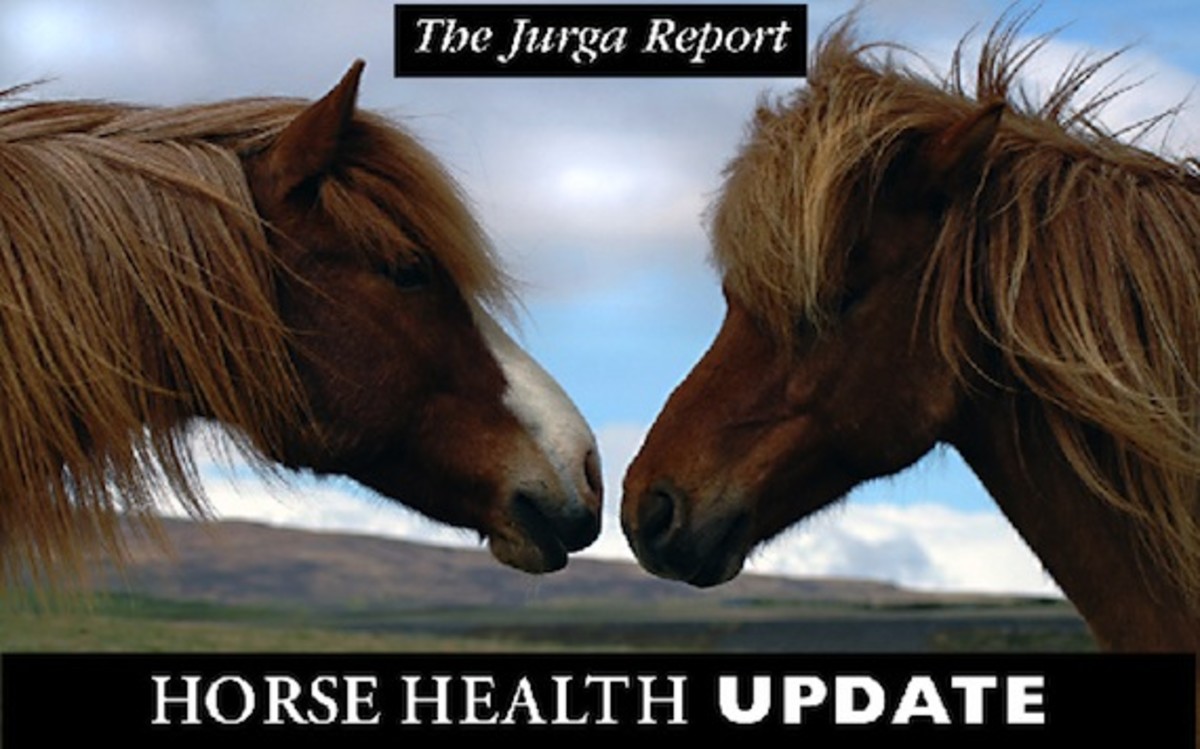Dourine Diagnosed in Sicily: One of Those “It Can’t Happen Here” Horse Diseases Jumps Continents
- March 10, 2017
- ⎯ Fran Jurga

When the New York Times reports on an Equine Herpes Virus outbreak, you know that horse diseases are doing something unusual. And that’s what happened today: the New York Times focused on how and why the virus spread as it did from a single horse event in Utah to affect horses all over the West.
Experts in Europe, meanwhile, are scratching their heads–in dismay–over the appearance of a complex equine venereal disease on their continental shores. World Horse Welfare alerted us today that dourine needs to be updated in our textbooks and references, after two outbreaks of the serious equine disease have cropped up in Catania, Sicily. World Horse Welfare is monitoring the situation closely.
According to the British Department for Environment, Food and Rural Affairs (Defra), which announced the outbreaks, no horses can now be exported from Sicily for at least six months, and they recommend that horse owners and keepers of breeding animals in Europe understand the clinical signs for dourine.? In the United Kingdom, dourine is a notifiable disease, so if any readers suspects that his or her horse might have contracted it, he or she is legally obliged to notify a local Animal Health Office.
Defra reported that one of the affected Sicilian horses was humanely euthanized while the second was still alive, but critically ill, at the time of notification (27 May 2011).? In-contact horses are under restriction.? There have been no recent cases of this disease in the European Union and investigations into the source of the outbreaks are underway. There have never been any cases in the United Kingdom.
Dourine is a parasitic disease of horses, and is unusual because it is transmitted almost exclusively during breeding (hence it is sometimes referred to as ?covering sickness’). It can also be transmitted from mares to their foals in some cases. Normally, such a parasitic disease would requite a vector, such as a fly or tick.
Once a widespread disease, dourine is currently considered endemic only in Africa and parts of Asia.? Outbreaks also occur in the Middle East and Russia. Treatment is possible but in certain cases can lead to horses becoming carriers.? Currently there is no vaccine available, and many affected animals die.
Horses may be carriers without displaying symptoms.? The main symptoms to look out for are:
- Genital swelling and discharge
- Weight loss, which may be severe
- Loss of coordination and weakness
Dourine can be prevented by ensuring that affected horses, or horses suspected of infection, are not used for breeding.
For more information about World Horse Welfare’s disease prevention campaign visit www.worldhorsewelfare.org/information/disease
There is certainly no reason for American horse owners to be worried about dourine, but it is critical to know about diseases that are moving around the world and to be aware of where outbreaks occur and what sorts of numbers of horses are involved.
Defra’s full Preliminary Outbreak Assessment can be found at
/content/content/8958/dourine-italy-010611.pdf
More information about Dourine and its clinical signs can be found at
http://archive.defra.gov.uk/foodfarm/farmanimal/diseases/atoz/dourine/
Thanks to Louise Chapman and World Horse Welfare for assistance with this article.If you are interested in equine diseases, World Horse Welfare will be a helpful resource.





